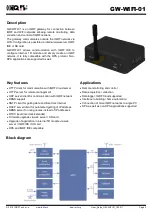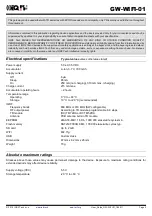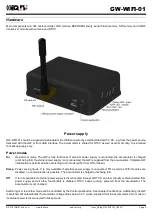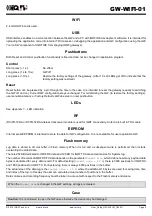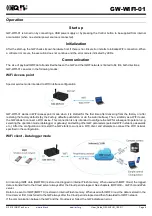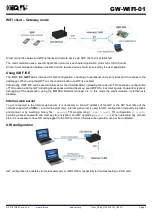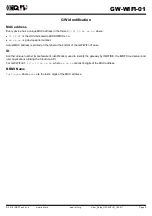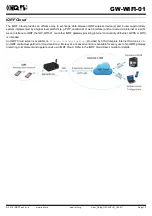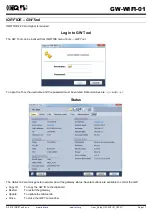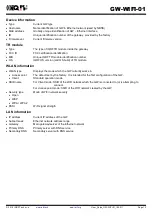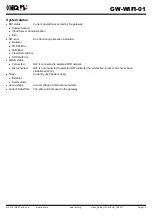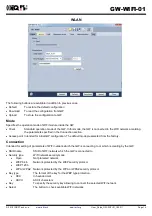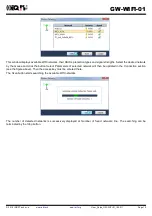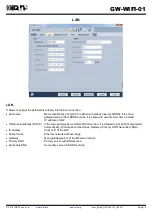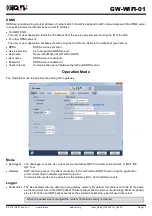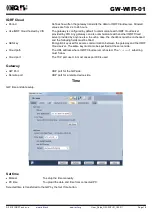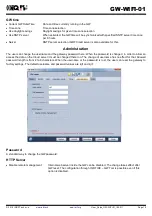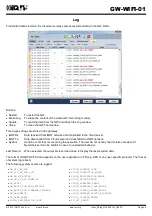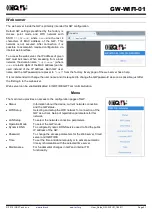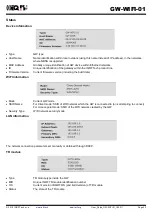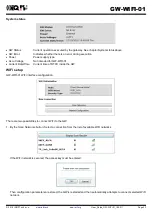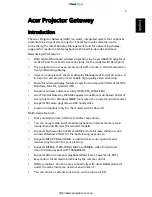
GW-WIFI-01
User_Guide_GW -WIFI-01_180511
Page 8
SD card file structure
The SD card is intended for development, service and maintenance. It should be accessed primarily by the GW while direct
writing by the user (externally by a standard SD card reader/writer) is recommended for exceptional purposes only. The
standard way to perform required changes is using the internal web server.
The SD card uses the following folders:
Root
The root directory is intended for a new FW (
gwwifi.hex
file) to be used for upgrade.
TRUPLOAD
The folder intended for files to be uploaded into the TR module (
*.hex
,
*.iqrf
,
*.trcnfg
).
GWCNFG
The folder intended to record a new GW configuration (
*.gwcnfg
).
BACKUP
The folder intended for current GW configuration (
gw.gwcnfg
).
When using the web server, all folders and files are created automatically when required. In case of external direct writing
the required folders must be created by the user. Files not necessary any more are automatically deleted after the usage.
System log
All important events are logged. System logs can be read using IQRF IDE GW Tool.
Date and time
GW-WIFI-01 contains a real time clock/calendar (RTCC). Date and time are synchronized using SNTP/Cloud server.
TR module data exchange
Data between the internal TR module and the GW memory is transferred bidirectionally via SPI (using the
bufferCOM
memory array inside the TR module). Therefore, the application in TR must have the SPI communication activated. When
using DPA, a
hardware profile with SPI interface must be uploaded in TR
. Such plug-in is uploaded from the factory. The
maximum SPI packet length is 64 B.
LAN services
HTTP client
Communication with IQRF Cloud server (using 128 b AES encryption)
HTTP server
Web pages for remote management via a common browser
HTTP client
Getting and updating of public address from DDNS
UDP server/client
Communication with IQRF network and for remote GW management
SNTP client
Getting date and time from time server
ICMP server
A
llowing “ping” to GW from a remote host
DHCP server
For IP addresses dedicated to one client (when the GW works in
Access point
mode)
DHCP client
Automated getting of IP address from the DHCP server
NBNS server
For using names instead of IP addresses within the LAN


